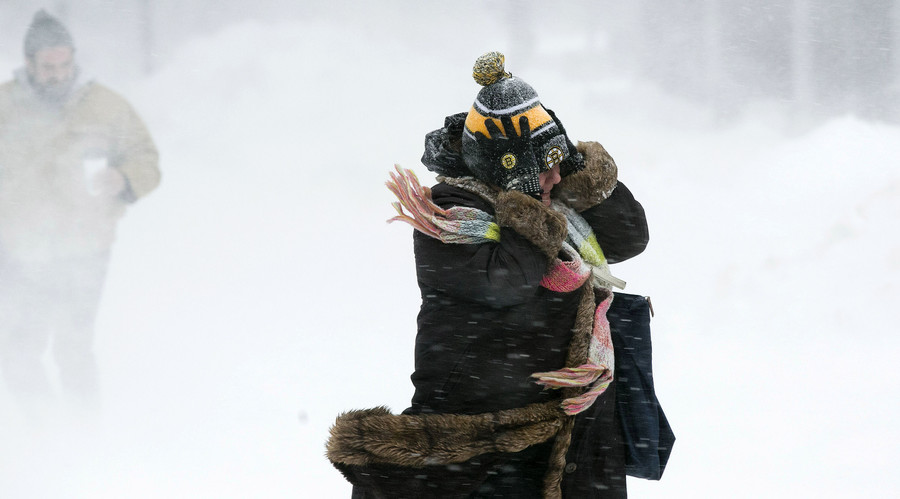It could be 2080 before we see any further
rise in the global temperature

© Dominick Reuter / Reuters
Recent research by scientists has suggested that there could be an imminent 35-year period of low solar activity that could lead to cooler global temperatures.
I like this theory. I posed in a previous article that there were 30 year cycles where the global temperature would alternately rise and then remain steady or even drop a little. In my observations I found that we are in the middle of a period of steady temperatures which will end in the late 2020's. Professor Zharkova predicts the low solar activity will begin around 2020. Those roughly 7 or 8 years of falling temperatures may make up for the excessively warm past two years because of the record strong El Nino. La Nina will also assist with that.
Should cooler temperatures continue through to 2055, as she suggests, then we will completely miss the next 30 year cycle of warming temperatures. Another period of steady temperatures are due to begin in the late 2050s. If this all works out then we won't see any significant rise in the global temperature until the last 20 years of this century.
If new models of the inner workings of the sun published by Professor Valentina Zharkova and her colleagues at Northumbria University on Tuesday are correct, then future variations in solar activity will be able to be predicted more accurately.
The sun is already known to have 11-year cycles of sunspots coming and going on the surface. But models that rely on looking at external features of the stars have only had mixed success in predicting the solar cycles.
Zharkova’s team found that the sun’s magnetic fields come from two components from two different layers of its body, and suggests that looking at the interactions between these two magnetic waves either magnifies or diminishes the sun’s intensity.
Perhaps most startlingly, observations made by the team using this method suggest that we may be entering a period of reduced solar activity, meaning that a period of lower global temperatures could be on the way. These conditions could be similar to those seen during the “Little Ice Age” of the 1600s, the peak of which was called the “Maunder Minimum,” a 70-year period when sunspots became extremely rare.
“In the Northern Hemisphere … the rivers were frozen, there were winters and no summers, and so on,” Zharkova said of the Little Ice Age, adding that she estimated the new predicted sunspot minimum to last for 35 years.
Man-made global warming - a conspiracy?
Whether future cycles actually match the scientists’ predictions will put their model to the test, but some climate scientists were not accepting of the new research, with some even trying to suppress it.
“Some of them were welcoming and discussing. But some of them were quite – I would say – pushy,” she told The Global Warming Policy Forum in an interview. “They were trying to actually silence us. Some of them contacted the Royal Astronomical Society demanding, behind out back, to withdraw our press release.”
This just re-affirms the notion that man-made global warming is a conspiracy and not real science. Real scientists don't suppress counter-information, they use it to improve their work. Those who's work has flimsy, or dishonest scientific support try to suppress dissenting scientific data.
The Little Ice Age is a controversial topic among scientist, with some arguing that low solar activity contributed to cooler temperatures in the Northern Hemisphere and others contending atmospheric effects of volcanic eruptions pushed temperatures lower.

No comments:
Post a Comment